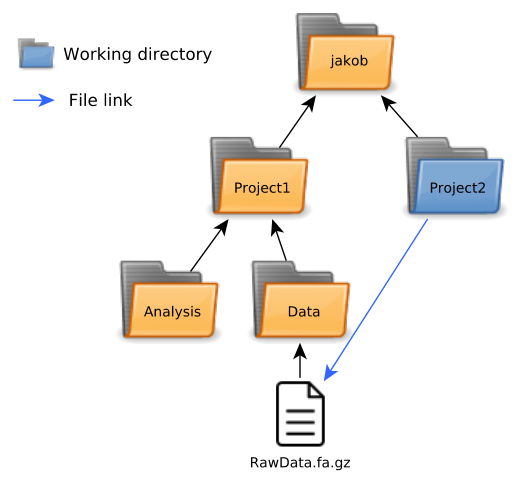Introduction to UNIX for Biologists
Background
UNIX-based file systems and UNIX-terminals are ubiquitous when working with biological data. The UNIX-terminal excels for work with text files, but is also useful in a much wider context. It gets you closer to the computer, and gives control, flexibility and the ability to automate a variety of tasks.
The aim with this material is to give an understanding of UNIX. Visualizations and exercises are used to reinforce the learning. Each chapter ends with a recap-part to encourage reflection.
I find visualizations a powerful tool to help putting a concept or command into context. Illustrations like the one shown below are frequently used throughout the material.

This material was originally written for an introductory course called “Introduction to UNIX for biologists” at Lund University, Sweden. It was given by NBIS with support from PlantLink.
If you have questions or comments - let me know me know at:
jakob (at) jakobwillforss (dot) com
Downloads
Chapters
- Introduction to the course
- Introduction to the File System
- Working with files in UNIX
- Working with file content
- File permissions, organizing files and UNIX hygiene
- Working with file streams
- Pattern matching, variables, subshells and loops
- Introduction to scripting
